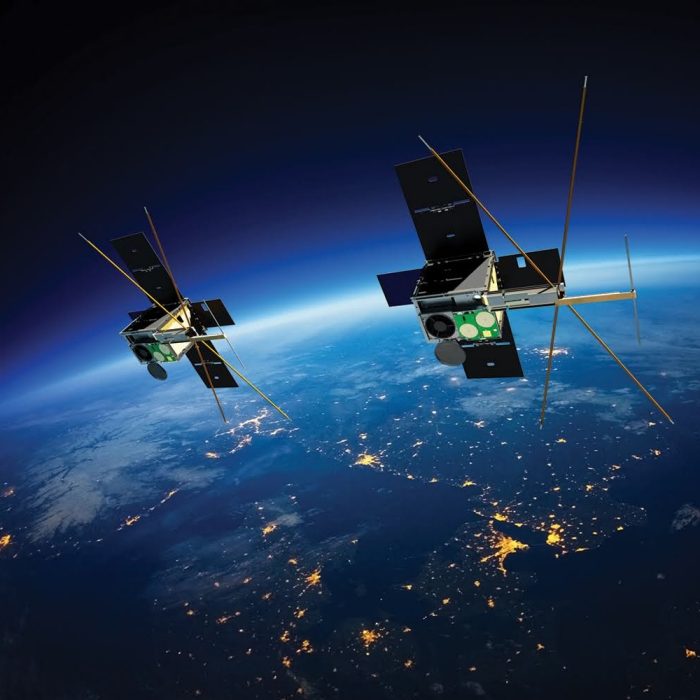M2 Mission

M2 is the third mission under the Royal Australian Air Force and UNSW Canberra Space research agreement. It follows the M1 and M2 Pathfinder missions and was launched in March 2021.
M2 comprises two 6U cubesats aimed at demonstrating a wide range of space technology development for the Australian space sector and RAAF. Each is equipped with advanced radios and optical telescopes (designed in-house) to gather remote sensing information, in particular to demonstrate maritime surveillance capabilities. M2 also includes in-house star tracker technology for precision pointing knowledge, and an events-based-sensor, provided by Western Sydney University.
Formation flying plays a major role in this mission with both satellites flying together. They will communicate with each other via an inter-satellite link, employing the aerodynamic forces present in low Earth orbit to control the formation.
M2 also demonstrates significant on-board processing capabilities, with processing options ranging from CPUs to FPGAs to GPUs. The core of the on-board processing is provided with the in-house developed, versatile and rugged computer known as Volkh, which is successfully operating on M2 Pathfinder and has been incorporated into CSIRO’s CSIROSat1.
One of UNSW Canberra Space’s major research strengths is the science of Space Situational Awareness, and the M2 mission includes multiple science experiments that will progress this research. This includes measurements of the forces in low Earth orbit associated with a charged object interacting with the charged ionosphere. It will explore the capabilities of ground-based space surveillance sensors to detect the moment when the two 6U spacecrafts are separated from each other early in the mission.
Along with our other space missions, M2 will deliver significant education outcomes for Defence students studying engineering at UNSW Canberra, building Australia’s space capability for the future.
